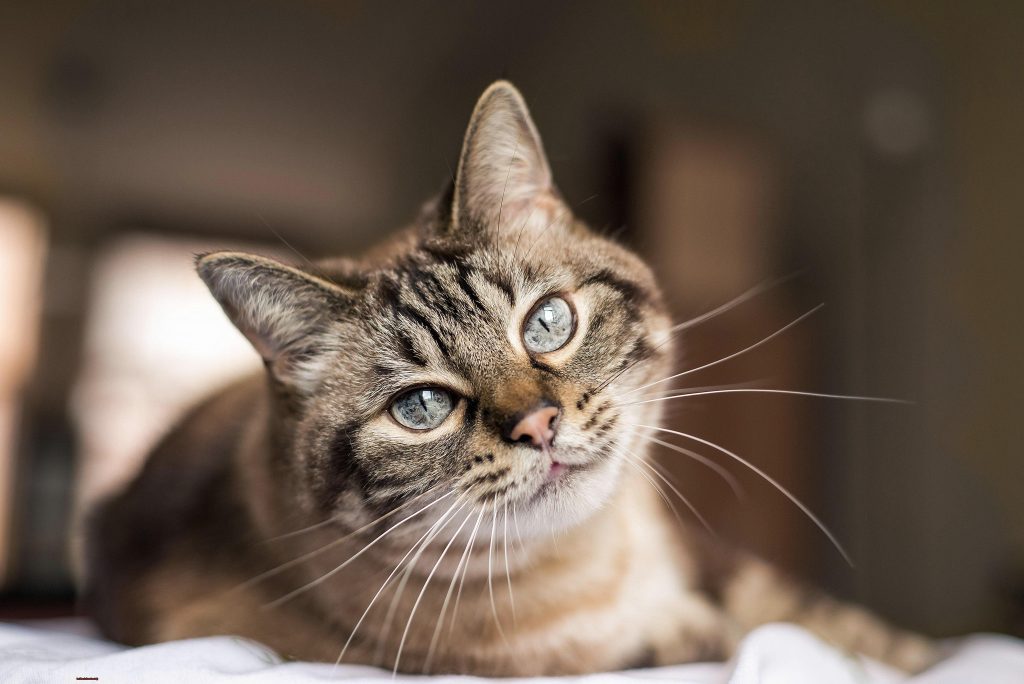As cat enthusiasts, we can all agree that our feline companions are full of surprises.
From their graceful movements to their mysterious behavior, they constantly keep us on our toes. But have you ever stopped to wonder how they view the world around them?
While we may see a rainbow of colors, cats have a completely different perspective. In fact, their color perception is unique and plays a crucial role in how they navigate through their environment.
Get ready to be amazed as we embark on this colorful journey together.
Are Cats Color Blind?
Contents
For years, cat owners have been curious about their furry friends’ color vision. Many have heard the age-old belief that cats are completely color blind, only able to see in shades of black, white, and gray. But is this really true? The answer may surprise you.
Recent research on feline vision has shown that cats do have some ability to see colors, but it is not as developed as humans or other animals. This means that while cats may not see the world in the same vibrant colors as we do, they are not completely color blind.
So why do cats have limited color vision? It turns out that their unique eyesight is due to a combination of factors, including evolution and hunting habits. Cats are natural predators and have evolved to rely more on their other senses, such as smell and hearing, rather than sight when hunting prey. This means that color vision may not be as necessary for their survival.
Additionally, cats’ ancestors were nocturnal hunters who primarily relied on night vision. This explains why cats have a higher concentration of rod cells in their eyes, which are more sensitive to light and movement. While this allows them to see well in low light conditions, it also makes it more challenging for them to distinguish between colors.
However, this does not mean that cats cannot see any colors at all. Studies have shown that they can distinguish between certain colors like red and green, as well as blues and yellows to some extent. This is due to the presence of cone cells in their retinas, which allow them to perceive colors to some degree. However, their color vision is limited compared to humans, with only two types of cone cells compared to our three.
It is also important to note that just like with humans, there may be some variations in color vision among different cat breeds. Some studies have shown that certain breeds, such as Siamese cats, may have better color vision than others. However, more research is needed in this area to draw conclusive results.
Human vs. Cat Vision: Understanding the Differences
Have you ever wondered how your furry feline friend sees the world? It’s a common misconception that cats are completely color blind, but the truth is, their vision is quite different from ours. As an expert on the topic of human vs. cat vision, let’s dive into the fascinating distinctions between these two species.
Color receptors – while humans have three types of color receptors (red, green, and blue) in their eyes, cats only have two (blue and green). This means that they see colors on a limited spectrum compared to us. They cannot distinguish between shades of red and green, but they can see different shades of blue and green. So while your cat may not appreciate that bright red toy you bought them, they can still appreciate the blue sky and green grass.
Night vision – have you ever noticed how cats seem to navigate effortlessly in the dark? That’s because they have a higher concentration of rod cells in their eyes compared to humans. Rod cells are responsible for detecting light and motion, making cats experts at seeing in low light conditions. This also explains why they have those iconic glowing eyes – it’s due to a reflective layer in their eyes called the tapetum lucidum.
Peripheral vision – cats also have a wider field of view compared to humans. While we have a field of view of around 180 degrees, cats can see up to 200 degrees. This allows them to have a better awareness of their surroundings and potential predators or prey.
Other senses – the limited color vision of cats is compensated by their heightened sense of smell and hearing. They rely more on these senses to navigate and hunt in their environment. So even though they may not see all the colors in the rainbow, they have other ways of experiencing the world around them.
How Cats See Colors
No, your cat is not color blind – they just see colors differently than we do. As pet owners, we often wonder if our feline friends see the world in the same hues as us. The truth is, cats have a limited range of color vision compared to humans. But that doesn’t mean they can’t appreciate the beauty of their surroundings. Let’s dive into the fascinating world of how cats see colors.
Blue and yellow – that’s all the colors on a cat’s spectrum. Unlike humans, who have three types of color-sensitive cells in their eyes, cats only have two. This means they cannot see red, green, or orange, but they can still distinguish between shades of blue and yellow. So, while your cat may not appreciate the vibrant colors of a rainbow, they can still admire the different shades of blue in the sky or yellow flowers in the garden.
But wait, there’s more. Cats’ eyes are also adapted for low light conditions, making them excellent hunters at night. Their larger pupils and reflective layer behind their retinas called the tapetum lucidum allow them to see better in dim lighting. However, this also affects their color perception. So, while cats may see colors differently during the day, their vision is adapted for their nocturnal lifestyle.
Studies have shown that cats may be able to distinguish between some colors, such as red and green. This is due to the different types of color-sensitive cells in their eyes. But it is believed that they evolved with this limited color vision as they were primarily nocturnal hunters and did not need to rely on color perception to catch their prey.
But don’t think that cats’ limited color vision hinders their daily activities or hunting abilities. In fact, they have other visual abilities that humans lack. For one, cats have a wider field of vision than us – almost 200 degrees compared to our 180 degrees. They also have better depth perception and can judge distances more accurately. This is thanks to the placement of their eyes on the front of their head, giving them a binocular vision.
The Role of Cone Cells in Color Vision
They can jump to great heights, land on their feet, and even see in the dark. But have you ever wondered how cats see colors? It turns out that the answer lies in their specialized photoreceptor cells called cone cells.
Cone cells are responsible for detecting color and details in bright light. In humans, we have three types of cone cells that allow us to see a wide spectrum of colors: red, green, and blue. However, cats only have two types of cones – those sensitive to blue and green light. This means that cats have dichromatic vision, while humans have trichromatic vision.
But why can’t cats see the color red? The answer lies in their genetics. The lack of red-sensitive cone cells in cats means that they are unable to perceive the color red. To them, red objects appear as a shade of gray or brown. So next time your cat seems uninterested in that bright red toy, don’t worry; it’s not because they don’t like the color.
Not only do cats have a limited color spectrum, but they also have significantly fewer cone cells than humans. While we have around six million cone cells, cats only have around 250,000. This means that they have a more limited range of colors they can see compared to us.
However, don’t let these numbers fool you. Cats still have excellent visual acuity and can distinguish between shades of blue and green. They also have better vision in low light conditions than humans due to their high number of rod cells.
The role of cone cells in color vision has been extensively studied in cats through various experiments. One study found that cats were able to discriminate between different shades of blue and green using their cone cells. This suggests that even though they have fewer cone cells than humans, they still have a sophisticated color vision system.
Another study showed that cats were able to learn to differentiate between different colors and associate them with rewards. This further supports the idea that cats do possess some level of color vision, even though it may not be as advanced as humans.
Limitations in Cat Color Vision
Cats are often known for their keen senses, from their sharp hearing to their impressive night vision. But when it comes to color vision, these furry felines may not be as gifted as their human companions. So, why can’t cats see the world in full color like we do?
Firstly, it’s important to understand that color vision is dependent on the number and type of photoreceptor cells in the eye. While humans have three types of color-sensing cones, cats only have two. This means that they are limited to perceiving shades of blue and green, but not red or orange.
But why do cats have fewer color-sensing cones? It all comes down to their biology and evolution. As nocturnal animals, cats do not rely on color vision as much as humans do. Instead, they use their highly sensitive rod cells to see in low light conditions. This results in a trade-off between night vision and color vision.
In addition to this, genetics also play a role in a cat’s color perception. Certain breeds, such as Siamese and Burmese cats, have a genetic mutation that allows them to see some shades of red. This explains why some cat owners may notice their Siamese cat reacting differently to certain colors compared to other breeds.
But even with this genetic variation, a cat’s age and health can also affect its color vision. As cats age, their eyesight may deteriorate, leading to a decrease in color perception. Health conditions such as cataracts can also cause color blindness in cats.
Despite these limitations, cats are still able to navigate their environment effectively. They may not be able to see the full spectrum of colors like humans, but they can still distinguish between different shades of blue and green. And let’s not forget that cats have other heightened senses such as smell and hearing to make up for their lack of color vision.
Do Cats Have Any Color Vision at All?
After all, they seem to have a keen sense of sight when hunting or playing with their toys. So, do cats have any color vision at all?
The short answer is yes, but it’s not quite the same as humans. While we have three types of color-sensing cones in our eyes, cats only have two. This means that their color vision is limited compared to ours.
But before you write off your cat as being colorblind, it’s important to understand how their unique retinas work. Cats have a higher concentration of rod cells, which are responsible for low light vision, compared to humans. This gives them excellent night vision and allows them to see well in dim light.
On the other hand, cats have fewer cone cells that are responsible for color vision. They are dichromatic, meaning they can distinguish between shades of blue and green but struggle with red and orange. This is because cats lack the cone cells that are sensitive to red light.
But don’t worry, this doesn’t hinder their ability to hunt or play. Cats are still skilled hunters and can easily spot prey even without seeing the full spectrum of colors. They also have a larger number of rod cells compared to dogs, making them better at hunting in low light conditions.
Experts believe that cats may also use other visual cues such as brightness and contrast to navigate and hunt effectively. So while they may not see the world in the same vibrant hues as us, they still have a unique and functional vision that serves them well in their natural habitat.
The Impact of Limited Color Vision on a Cat’s Behavior and Survival Skills
From their agility and grace to their sharp instincts, cats are truly fascinating creatures. However, have you ever wondered how their limited color vision impacts their behavior and survival skills?
First, let’s understand what limited color vision means for cats. While humans have three types of cone cells in our eyes, cats only have two. This means that they can see some colors, but not as many as we do. For example, cats may struggle to differentiate between shades of red, orange, and green.
So how does this affect their daily activities? One significant impact is on their hunting and survival skills. Cats may find it challenging to detect subtle changes in their environment, such as camouflaged prey or predators. This can make it more difficult for them to hunt efficiently or protect themselves from danger.
But fear not, cat lovers. Our furry companions have evolved to adapt to this limited color vision. They rely on other senses such as smell and hearing to compensate for their visual limitations. This explains why cats are known for their keen sense of smell and excellent hearing abilities.
Moreover, limited color vision also influences how cats interact with us. They may not be able to distinguish between different colored toys or treats, which can explain why they may show preference for certain colors over others. So don’t be surprised if your cat seems to have a favorite toy in a specific color.
Interestingly, research shows that cats may be able to see certain colors better than others. They are more sensitive to blue and yellow tones, which could help them navigate in low light conditions or see prey against a green background. This also explains why many cat toys and treats come in these colors.
However, it’s essential to note that limited color vision does not hinder a cat’s ability to thrive in their environment. In fact, cats have evolved to use their other senses effectively, making them skilled hunters and beloved companions. They may not see the world in the same vibrant hues as us, but they have adapted and found ways to excel with their unique vision.
Conclusion
In conclusion, while cats may not possess the same colorful vision as humans, they have a remarkable way of interpreting their surroundings. Their limited color perception does not hinder their ability to thrive as skilled hunters and adaptable creatures.
It is important to note that cats are not completely color blind. They can distinguish between certain colors, such as blue and yellow, and have a higher concentration of rod cells for enhanced night vision. This further proves that their vision is not as black and white as we may think.
The factors contributing to cat color perception are a combination of genetics and evolution. As natural predators, cats rely on other senses like smell and hearing when hunting prey, making advanced color vision less essential for their survival.
But do not underestimate the visual abilities of our feline friends. They may not appreciate the vibrant hues of a rainbow, but they can still appreciate the beauty of a blue sky or green grass in their own unique way.
So next time you observe your furry companion effortlessly jumping or chasing after their favorite toy, remember that their unique vision is what allows them to navigate their environment with ease.






